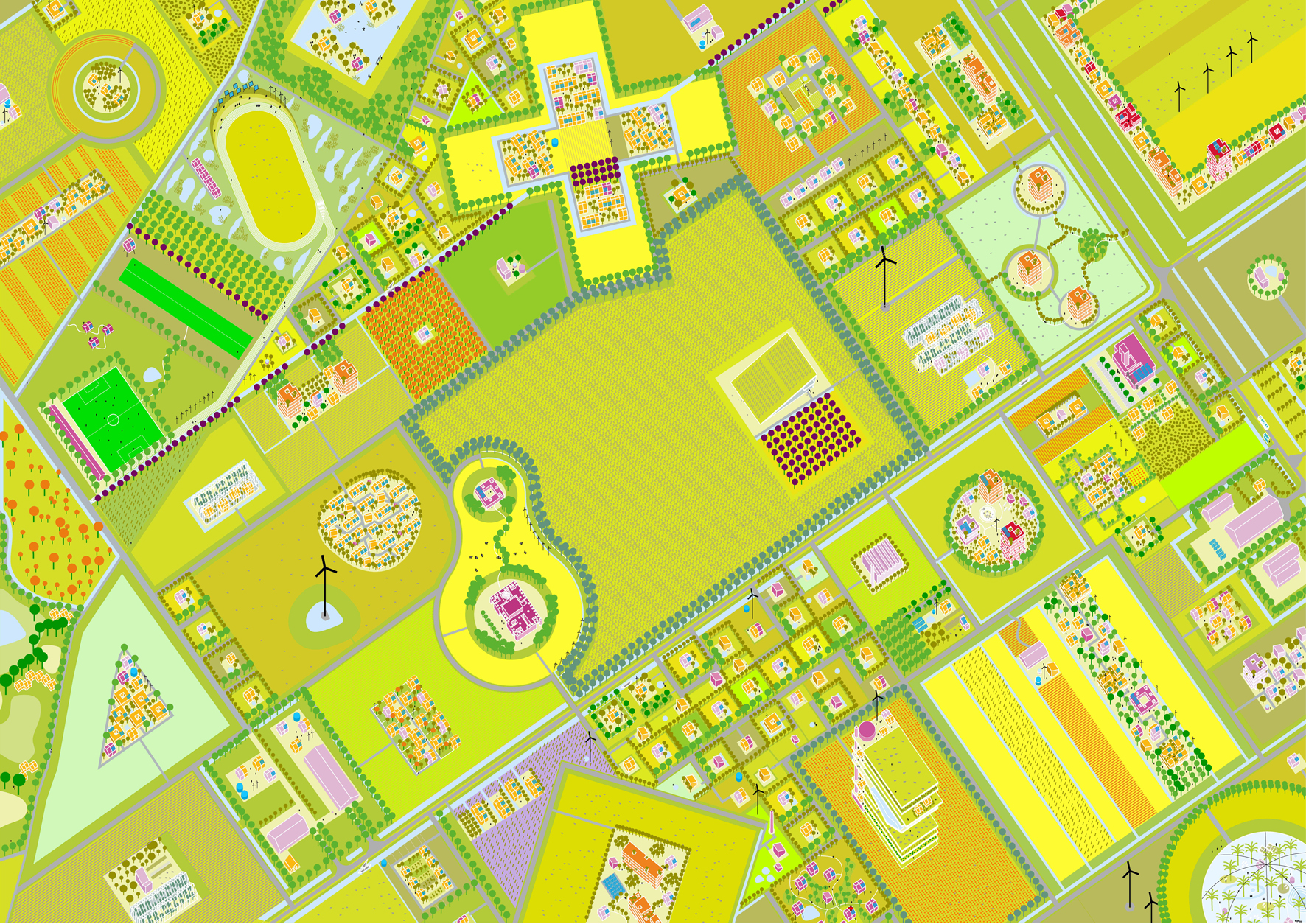The Netherlands are traditionally a country in which urban planning has reached a point where one could state that it gets too perfect and hence predictable. New Town Almere- entirely built on reclaimed land - is one of these overly perfect places and has decided years ago to allow construction of individually designed homes in a number of neighbourhoods. The experiment was a large success. Now the city of Almere and MVRDV take the next step. The urban planning itself will be an open process in which individual initiatives can thrive.
The extensive farmland in the east of the booming new town offers space for both individual and collective initiatives in a green rural surrounding. Almere Oosterwold is expected to develop over a longer period into a differentiated landscape in which nature and living, working and leisure will be combined in a low density as a balance act against the more urban west of the city. 50% of the site will be designated for urban farming, this specialised food production for the city is expected to improve Almeres sustainable profile and maintain the agricultural character of the area.
The strategy allows individual dreams to be realised under the following condition: one can develop a plot but also has to realise all necessary components such as a piece of the road, energy, sanitation, rubbish collection, public green and urban farming. This can be done as an individual or shared with a collective. To maintain the rural character the overall programming is kept at 18% construction, 8% roads, 13 % public green, 2% water and 59% urban agriculture.
This leaves space for golf course villages, plantations, autarkic villas, villages of collective groups etc. MVRDV developed the strategy as part of the Almere 2030 Structure Vision in which the city is growing with 100.000 inhabitants and 60.000 work places. Oosterwold allows a mixed use development with a new role for the government: from directive towards facilitating.
City Councillor Adri Duivesteijn explains: With this development we do right to everything a city built on manmade land symbolises. It illustrates that the city is a creation and that the people themselves can make the city. In this way the Oosterwold development is a strong point in the discourse about making cities.
The outcome is open and this in itself is a radical new method in Dutch urban planning. The government steps back and the citizens are offered more freedom but have to commit to more responsibility at the same time.
Almere Oosterwold: do-it-yourself urbanism to revolutionise Dutch planning
